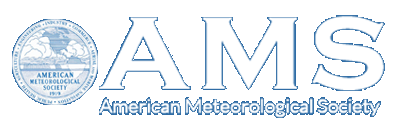Short Courses
AMS Short Course
‘Fundamentals and New Trends of Dual-Polarized
Phased Array Antennas for Weather Radar Applications’
Date: 15 September 2019
Time Schedule:
10:00-15:00
* Detailed schedule is being adjusted.
Location: Conference Room 6 (the second floor of the annex building).
Instructors: Dr. Jorge L. Salazar-Cerreno
Description:
The use of phased array antennas in weather radar applications enable agile beams with enhanced temporal resolution, a key feature for sampling large volumes of atmospheric phenomena whose life cycle is less than 30 minutes. Current solid-state technology allows research in waveform design such as optimal pulse compression for maximizing sensitivity, minimizing range sidelobes, time-frequency multiplexing waveforms for blind range mitigation, and coded waveforms to improve cross-pol isolation. Current advances in RF semiconductor technologies provide better integration and power density; as a result, smaller and more lightweight antennas can be installed on the sides of buildings, communication towers, and space and airborne platforms. There remain many fundamental questions surrounding how to relate traditional weather radar performance to equivalent metrics and operations on a phased array, including those revolving around appropriate scanning strategies, dual-polarized antenna patterns, thermal management, calibration, and both initial and life cycle costs. In the last decade, researchers and engineers have been focused on getting a better understanding of these questions and have also worked towards engineering solutions to the emerging challenges. This is particularly true for polarimetric antenna patterns, which are significantly more complicated in phased arrays. Additionally, an understanding of the differences between phased array and dish main-beam characteristics is important for reusing developed algorithms for conventional and operational weather radars.
This short course will address fundamentals of antennas and arrays focused on high-performance e-scanned dual-polarized weather radars. It starts with an introduction to antenna and array fundamentals for atmospheric research. Radiating elements, array architectures, active array technology, T/R modules, and design trade-offs are considered to guarantee high-performance dual-polarized weather radar. Polarization isolation, scanning range, surfaces waves, scanning strategies, gain loss, grating lobes, and spurious radiation will be also discussed.
Existing phased array radars (ground-based and airborne) in different bands (S, C, and X-band) will be presented. The main focus of this lecture is to introduce the most important and relevant challenges in the use of phased array antennas for atmospheric research: polarimetric e-scanning performance, scanning strategies, technology, mechanical design, and thermal and calibration issues. A discussion of practical design considerations for high power and high sensitivity radars with dual-polarized active phased array antennas will be also included.
Agenda:
Lecture 1: Introduction to antenna and array fundamentals for atmospheric research (given by Jorge Salazar, 1 hour)
- Antenna radiating elements for dual-polarization
- Array fundamentals and array architectures
- Surfaces waves and grating lobes
- Antenna array polarization (IEEE and Ludwig definitions)
Lecture 2: Introduction to active array antenna technology and design trade-offs (given by Jorge Salazar, 1 hour)
- Active array technology (TR modules) (CMOS, SiGE, GaS, and GaN)
- Power and thermal considerations
- Sidelobe levels and scanning performance
- Packaging and thermal dissipation
- Antenna characterization and calibration (conventional and in-situ)
Lecture 3: Introduction to current and new phased array radar development for atmospheric research (given by Jorge Salazar, 1 hour)
- X-band short range, low-power, high density weather phased array radar network
- X-band short range digital beamforming weather phased array radars
- C-band conventional and digital beamforming weather phased array radars
- S-band conventional and fully digital weather phased array radars
- Ka-band digital beamforming and image radar for cloud research
Information: Please contact Dr. Jorge L. Salazar (Advanced Radar Research Center (ARRC), The University of Oklahoma).
Email: salazar(at)ou.edu (at)=@

